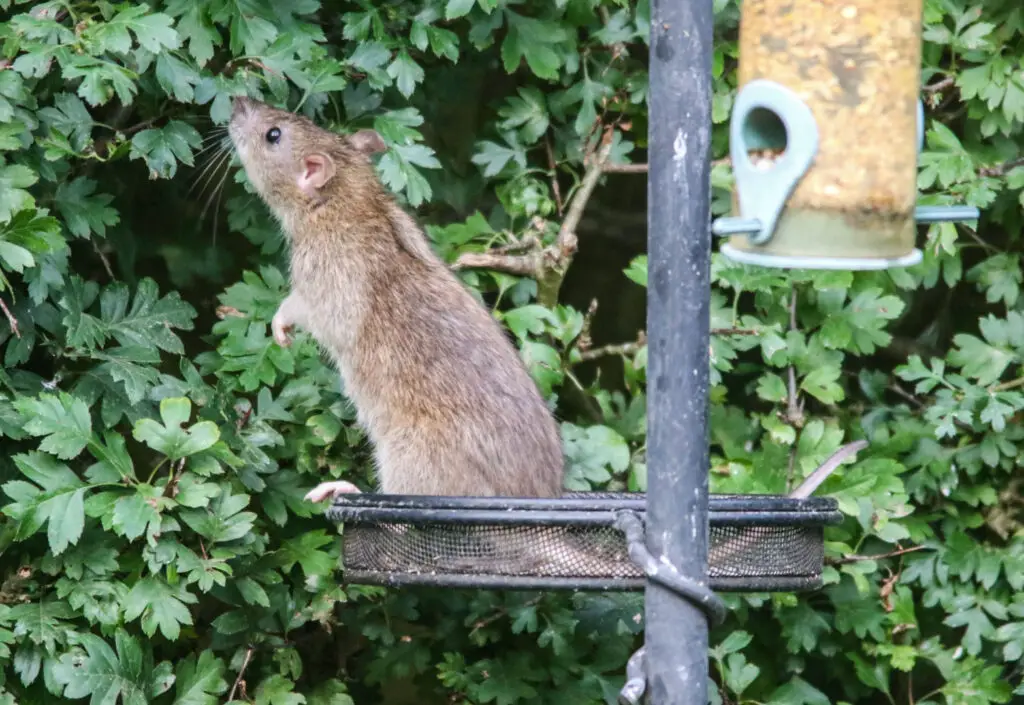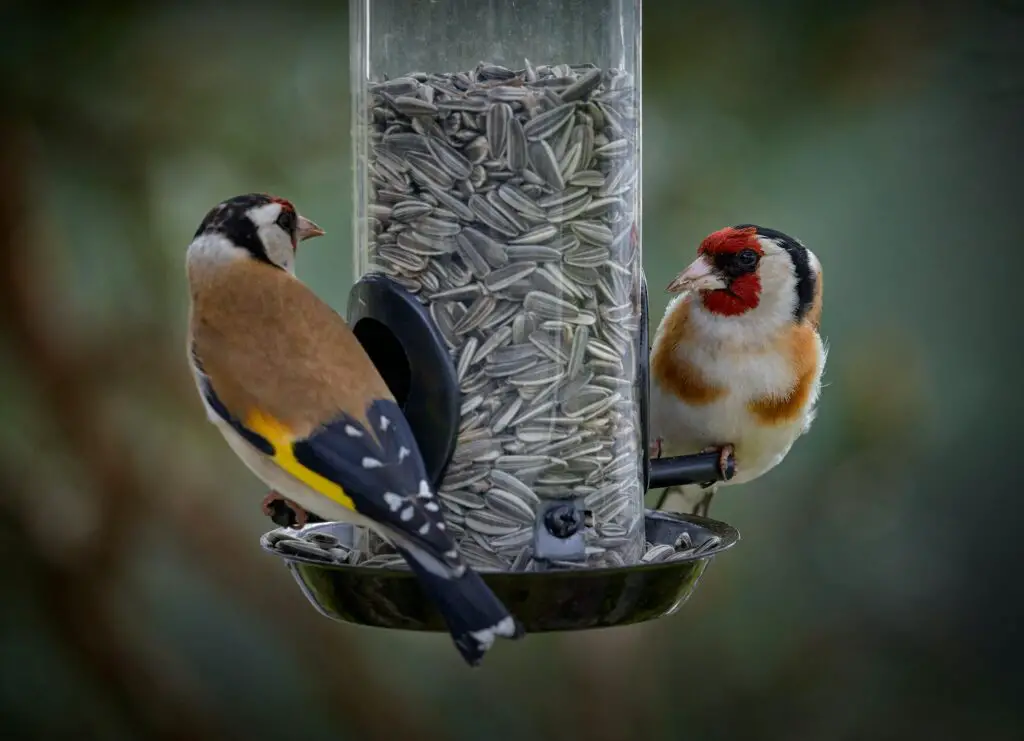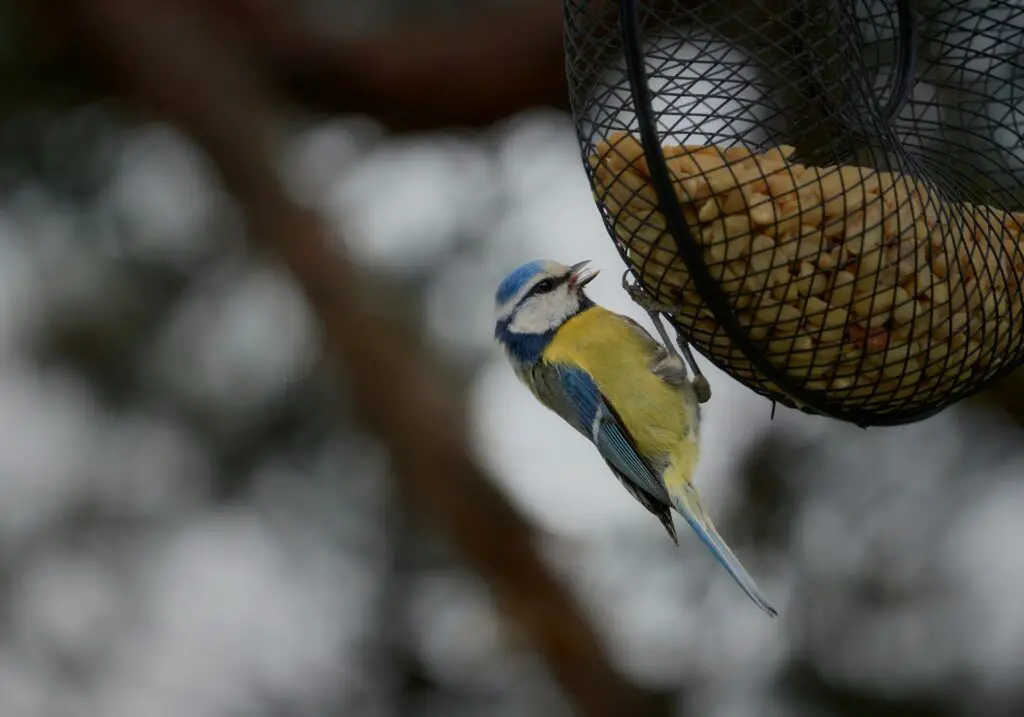While bird feeders are excellent for attracting a variety of birds, they can also inadvertently invite rodents. Mice, attracted by the bird food that spills onto the ground, can become a persistent problem. Feeding the birds can be done responsibly, however, by implementing effective rodent control strategies to ensure that seeds will attract birds and not mice.
The Role of Bird Feeders in Rodent Infestations
Bird feeders can become unwitting hosts for rodent populations, particularly as spilled seeds create an abundant food source. Mice, being opportunistic feeders, are quick to capitalize on such ready meals. While birds eat during the day, rats are nocturnal and will often visit feeders at night, making the issue less noticeable to the casual observer.
Identifying Signs That Mice Are Present Around Feeders
One of the first indicators of a rodent issue is the presence of droppings or gnaw marks around the feeding area. Additionally, mice from climbing structures to access feeders might leave smudge marks or footprints. Homeowners should also keep an eye out for entry points into sheds or garages where bird seed is stored, as these can be entryways for mice.
For those looking to deter mice, adding cayenne pepper to bird seed has been suggested as a natural repellent, as it’s unpalatable to rodents yet does not harm birds. However, this should be used cautiously, as it can irritate the eyes and skin of both animals and humans upon contact.
Assessing Rodent Risks to Your Home Environment
It’s essential to assess potential risks to your home environment when dealing with mice around bird feeders. Rodents can carry diseases and cause structural damage by chewing through materials. They also have the potential to contaminate food supplies, making rodent control a significant concern for health and safety.
By evaluating the proximity of bird feeders to your home and identifying potential entry points for rodents, you can take preemptive action to mitigate these risks. Ensuring that bird feeders are not positioned near windows, doors, or any openings is a key step in protecting your home from unwanted guests.

Strategic Bird Feeder Placement and Maintenance
Placing and maintaining bird feeders strategically is crucial for minimizing the chances of attracting rodents. Optimal feeder placement, routine cleaning, and proper food storage are all part of a comprehensive approach to maintaining a clean and safe bird-feeding environment.
Optimal Placement for Bird Feeders to Minimize Rodent Interest
To minimize rodent interest, bird feeders should be placed away from structures that mice can climb, such as trees or fences. Elevating feeders and using poles with smooth surfaces can prevent mice from accessing them. Additionally, feeders should be positioned so that any spilled seeds are visible and can be cleaned up promptly.
Regular Cleaning Protocols for Bird Feeder Hygiene
Regular cleaning of bird feeders is vital for hygiene and to deter rodents. Feeders should be emptied and sanitized weekly to prevent mold growth, which can harm birds and attract mice. Old seeds and hulls that accumulate beneath feeders should be cleared to eliminate another food source for rodents.
Proper Bird Feed Storage to Discourage Rodent Access
Proper seed storage is a critical aspect of rodent-proof bird feeders. Storing bird feed in airtight, rodent-proof containers can significantly reduce the likelihood of attracting mice. Placing glue traps around storage areas can also serve as a monitoring tool to alert homeowners of any potential rodent activity.
Bird Feeder Selection and Modification Techniques
Choosing the right bird feeder and modifying existing ones can greatly reduce the chances of rodent infestations. Through selective feeder designs and the use of no-waste bird food options, bird lovers can continue to enjoy feeding birds without attracting unwanted rodents.
Selecting Rodent-Resistant Bird Feeder Designs
Selecting bird feeders with rodent-resistant features, such as weight-sensitive perches that close off access to the food, can be an effective deterrent. Additionally, metal feeders are more resistant to gnawing, making them less accessible to mice looking for a meal.
No-Waste Bird Food Options to Reduce Ground Debris
Using no-waste bird food options can significantly reduce the amount of ground debris and attract mice and rats less. Options like hulled millet, sunflower hearts, shelled peanuts, and cracked corn are less likely to be scattered and can be consumed completely by birds without attracting additional pests.
Adding Seed Trays and Baffles for Rodent Deterrence
For ground-feeding birds, a mix of seeds can be offered in a feeder with a tray or a seed catcher tray to minimize spillage. These trays can help contain seeds and prevent them from becoming accessible to rodents. Additionally, baffles can be installed on feeder poles to prevent mice from climbing up to the feeders.

Enhancing Rodent Deterrence in Your Yard
To further deter rodents, homeowners can employ various natural repellents and strategic yard adjustments. These additional measures can enhance the effectiveness of rodent-proof bird feeders and storage practices.
Natural Repellent Strategies to Keep Mice Away
Natural repellents, such as peppermint oil and ultrasonic devices, can be used to prevent rats from coming into the area around bird feeders. These methods can be a humane and environmentally friendly way to maintain a rodent-free yard while still enjoying the presence of birds.
Incorporating Rodent-Proof Measures for Feeders and Storage
To safeguard bird food from becoming a banquet for unwelcome guests, it’s essential to employ rodent-proof measures. Metal feeders can prevent rodents from chewing through, while securely closing lids deter access to the food. Elevating feeders on smooth poles can impede rodents from climbing and accessing the feed. Additionally, storing bird food in metal containers with tight-fitting lids can significantly reduce the risk of rodent infestation.
Importance of Distance: Keeping Feeders Away from the House
Strategically placing bird feeders at a considerable distance from the house minimizes the risk of rodents finding entry points into your home. Maintaining a buffer zone between feeders and living spaces can be pivotal in keeping rats away from your bird feeders and ultimately your residence. This preventative spacing ensures that birds can enjoy their meals while keeping your home a no-rodent zone.
Addressing the Underlying Factors of Attraction
Understanding and mitigating the fundamental aspects that attract rodents is critical in controlling their presence near bird feeders.
Habitat Management to Reduce Rodent Harborages
Effective habitat management involves removing potential rodent shelters near bird feeders, such as dense vegetation or debris piles. By keeping the feeding area tidy and free of cover, mice and other rodents are less likely to take up residence. Regular inspections for burrows or nests can further discourage rodents from settling near feeders.
The Impact of Nearby Pet Food on Attracting Mice
Unsecured pet food can attract rodents as much as wild bird feed, providing an easy meal for mice. To prevent this, store pet food in sealed containers and refrain from leaving food bowls outdoors overnight. By removing these attractants, you can significantly lower the chances of rodents encroaching upon areas where birds feed.
Landscaping Adjustments to Dissuade Rodent Visitors
Altering your yard’s landscape can be a natural deterrent to rodents. Choose plants that do not produce heavy seed or fruit fall, and trim back tree limbs that could provide access to feeders. Gravel borders around feeding areas can also discourage rodents from approaching, as they expose mice to predators while crossing open spaces.

Proactive Measures and Vigilance
Remaining vigilant with proactive strategies is key to preventing rodent infestations near bird feeders.
Implementing a Rodent-Proofing Plan for Your Home
Creating a rodent-proof home starts with sealing all possible entry points, such as gaps in the foundation or openings for pipes and cables. Use materials that rodents cannot easily gnaw through, like metal or concrete. Secondly, consider installing barriers to prevent rodents from climbing onto roofs or balconies, thereby cutting off another potential access route to your home.
Additionally, keep vegetation trimmed and away from the house to remove pathways for rodents. Regularly inspect the perimeter of your dwelling for signs of rodent activity, and promptly address any vulnerabilities. By systematically following these steps, you can create an effective rodent-proofing plan that will protect your home and bird feeders.
The Value of Consistent Monitoring and Adaptation
Consistent monitoring of your bird feeder area is essential to detect early signs of rodent activity. This means regularly checking for droppings, gnaw marks, or tracks. Adaptation is equally important; if you notice an increase in rodent presence, it may be time to adjust your feeding practices or consider new deterrent methods. Being responsive to changes in rodent behavior can help keep your bird feeders safe and clean.
For instance, if a particular bird food seems to be attracting more rodents, switch to a less appealing variety, or reduce the quantity of food offered to minimize leftovers. These timely adaptations, guided by vigilant observations, can significantly reduce the attractiveness of your bird feeders to rodents.
When to Consider Professional Pest Control Assistance
If despite your best efforts, you’re facing a persistent rodent problem, it may be time to seek professional pest control assistance. Experts can provide a thorough evaluation of the situation and offer tailored solutions that go beyond DIY methods. They have access to commercial-grade repellents and traps that can effectively manage a rodent population.
Moreover, pest control professionals can identify and mitigate complex issues, such as widespread infestations or structural vulnerabilities in your home that you may have overlooked. Their intervention can be invaluable in ensuring that your bird feeder hobby does not turn into a rodent dilemma.
Conclusion: Balancing Bird Watching with Rodent Control
Maintaining a bird feeder to observe a variety of bird species can be a delightful hobby, but it may unintentionally invite rats or mice. These rodents are attracted to the easy meals provided by loose seeds and seeds and hulls scattered beneath feeders. Bird enthusiasts must, therefore, implement strategies that block rodent access and deter rodents from turning their bird-watching sanctuaries into rodent gathering spots. By choosing the right feeder designs, avoiding filler seeds, and maintaining cleanliness, one can enjoy the chirps without unwelcome squeaks. Ensuring the safety of children or pets, while keeping the favorite food of mice at bay, requires vigilance and proactive measures. Modifications such as adding trays that catch seeds and hulls, using bird feed that prevents squirrels and other rodents from feasting, and storing feed securely can significantly reduce rodent visits. In cases of persistent rodent problems, a well-placed rat trap might be necessary. By striking a balance between attracting birds and deterring pests, bird watchers can protect their homes and continue to engage with nature responsibly.


